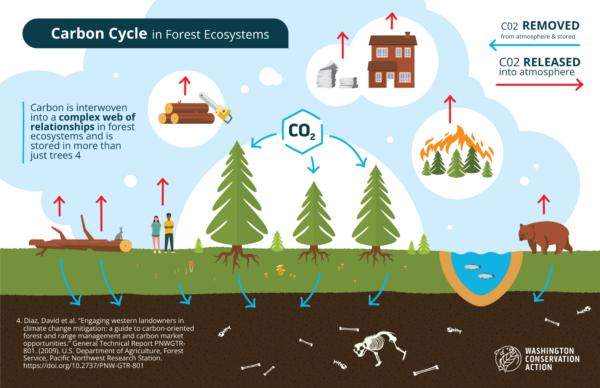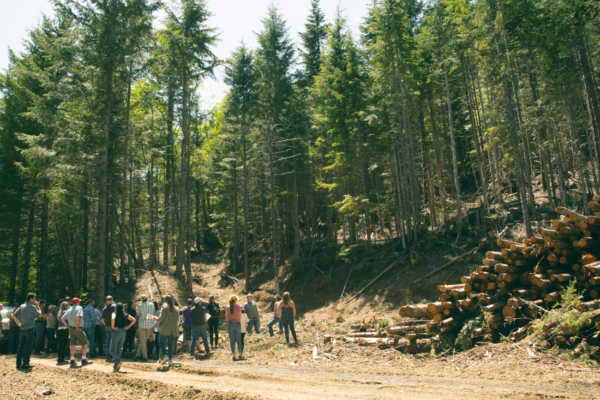It’s hard to imagine, but there was a time when our state looked a lot different. It was arid and the atmosphere was dense with CO2. When the first trees evolved, they helped cool the planet and absorbed massive amounts of carbon. While they still provide this service today, understanding how trees store CO2 becomes all the more important in the face of our climate crisis. As we look for ways to create a sustainable future, trees and their ability to clean our air need to be a part of the equation.
For this reason, WEC hosted the Carbon Friendly Forestry Conference this September. The conference brought together researchers, conservationists, business leaders, and government officials to talk about the current carbon science and the options we have for storing more CO2 in forests.
Washington’s forests have enormous potential to be a tool in the global fight against climate change.
Though there were many conversations at the conference, what’s clear is Washington’s forests have enormous potential to be a tool in the global fight against climate change. Our forests store more carbon than anywhere else in the United States and are one of the biggest natural carbon sinks in the world. The older our forests grow, the more carbon they can store and the better they provide critical ecosystem services like clean water and wildlife habitat.
Still, the challenge remains to make sure this science gets translated into effective policies and on-the-ground management of our forests. We continue to explore ways to value and account for the important role forests play in storing carbon, through carbon markets and working forest conservation easements. But we’re also ensuring this kind of science is informing ecologically responsible forest management on state lands.
Recently, WEC’s work on state lands has focused on holding the Department of Natural Resources (DNR) accountable for determining an accurate Sustainable Harvest Calculation (SHC). Every ten years DNR calculates the SHC for the next decade. This important but obscure decision has an enormous impact on our state. It determines how much habitat is protected in western Washington, and how much revenue schools and county beneficiaries can expect. DNR has a legal obligation called the ‘trust mandate’ set forth in the state constitution to provide revenue to these beneficiaries. Historically, that revenue has come from timber sales.
But this system has created pressure for too much logging on our state forests, making it difficult to achieve ecological goals. For example, the trust mandate is limiting how much forest we can protect for endangered birds such as the marbled murrelet, which is in turn a factor in the 10-year logging target for state forests.
How do we achieve sustainable, ecological management of our forests while meeting our state’s legal obligation?
We’re at a calculation crossroads – how do we achieve sustainable, ecological management of our forests while meeting our state’s legal obligation? WEC has learned from the past to set our course for the future, and we hope DNR does the same. Decades ago, we realized Washington’s forests were on the brink of being over-harvested. This demanded new strategies, so we re-envisioned what forestry could look like to ensure Washington remains the Evergreen State. The future of our forests matters for all Washingtonians and WEC is leading the way so our forests can do what they do best: provide timber products and local jobs, clean drinking water for communities, removal of carbon pollution, cultural values for tribes, and places where outdoor recreation and wildlife can thrive. There will be obstacles along the way, but we know our path will allow us to achieve our mission to protect, restore, and sustain Washington’s environment for all.



